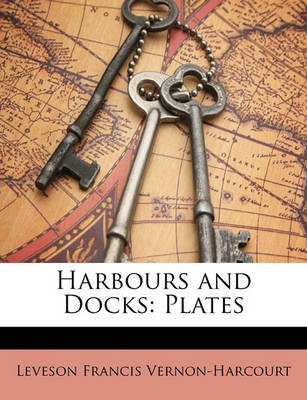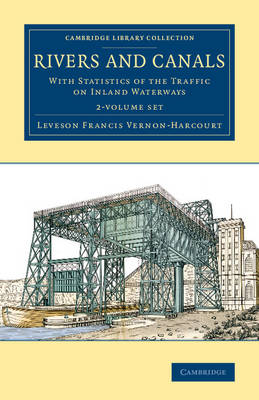Cambridge Library Collection - Technology
1 primary work • 5 total works
Volume 1
Leveson Francis Vernon-Harcourt (1839-1907) drew on a distinguished career in canal and river engineering for this illustrated two-volume survey, here reissued in its enlarged 1896 second edition. Having started as an assistant to the civil engineer John Hawkshaw, Vernon-Harcourt was appointed resident engineer in 1866 for new works on London's East and West India docks. Later, as a consulting engineer, he specialised in the design and construction of harbours, docks, canals and river works, and he was elected professor of civil engineering at University College London in 1882. This publication covers the design and construction of tidal and flood defences, canals, locks, and irrigation works. Volume 1 covers the physical characteristics of rivers and estuaries, and the control of their flow through dredging and works such as weirs and breakwaters. Vernon-Harcourt also discusses the design of flood defences. His Harbours and Docks (1885) is also reissued in this series.
Professor of civil engineering at University College London, Leveson Francis Vernon-Harcourt (1839-1907) drew on considerable practical experience, having worked most notably on London's East and West India docks. The present work was first published in two volumes in 1885. This reissue combines in one volume the text and the plates, including plans and maps of important examples. The topics discussed include natural and artificial harbours; the impact of waves, tides and currents; and general principles of construction. Furthering Vernon-Harcourt's aim to educate readers on both the theory and practice of hydraulic engineering, the work features case studies on specific projects (including their origins and condition at that time), shedding much light on the history and operation of infrastructure that proved essential for the development of modern trade. Of related interest, Thomas Stevenson's The Design and Construction of Harbours (second edition, 1874) is also reissued in this series.
Leveson Francis Vernon-Harcourt (1839–1907) drew on a distinguished career in canal and river engineering for this illustrated two-volume survey, here reissued in its enlarged 1896 second edition. Having started as an assistant to the civil engineer John Hawkshaw, Vernon-Harcourt was appointed resident engineer in 1866 for new works on London's East and West India docks. Later, as a consulting engineer, he specialised in the design and construction of harbours, docks, canals and river works, and he was elected professor of civil engineering at University College London in 1882. This publication covers the design and construction of tidal and flood defences, canals, locks, and irrigation works. Volume 1 covers the physical characteristics of rivers and estuaries, and the control of their flow through dredging and works such as weirs and breakwaters. Vernon-Harcourt also discusses the design of flood defences. His Harbours and Docks (1885) is also reissued in this series.
Leveson Francis Vernon-Harcourt (1839–1907) drew on a distinguished career in canal and river engineering for this illustrated two-volume survey, here reissued in its enlarged 1896 second edition. Having started as an assistant to the civil engineer John Hawkshaw, Vernon-Harcourt was appointed resident engineer in 1866 for new works on London's East and West India docks. Later, as a consulting engineer, he specialised in the design and construction of harbours, docks, canals and river works, and he was elected professor of civil engineering at University College London in 1882. This publication covers the design and construction of tidal and flood defences, canals, locks, and irrigation works. Volume 2 covers canal engineering, discussing the design and construction of canals and their associated works such as locks and lifts. Vernon-Harcourt also discusses ship canals and irrigation works. His Harbours and Docks (1885) is also reissued in this series.
Leveson Francis Vernon-Harcourt (1839-1907) drew on a distinguished career in canal and river engineering for this illustrated two-volume survey, here reissued in its enlarged 1896 second edition. Having started as an assistant to the civil engineer John Hawkshaw, Vernon-Harcourt was appointed resident engineer in 1866 for new works on London's East and West India docks. Later, as a consulting engineer, he specialised in the design and construction of harbours, docks, canals and river works, and he was elected professor of civil engineering at University College London in 1882. This publication covers the design and construction of tidal and flood defences, canals, locks, and irrigation works. Volume 1 covers the physical characteristics of rivers and estuaries, and the control of their flow through dredging and flood defences. Volume 2 covers the construction of canals, locks and irrigation works. Vernon-Harcourt's Harbours and Docks (1885) is also reissued in this series.



